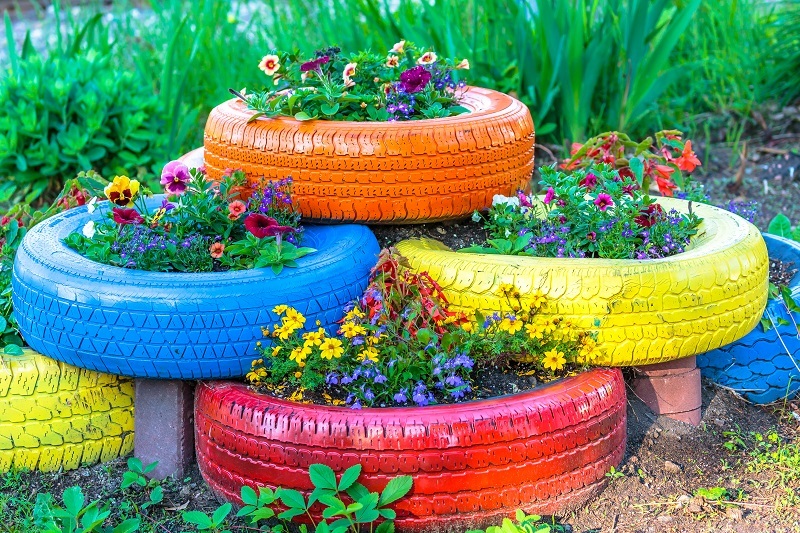Discover the Overlooked: 8 Hidden Facts About Sunflowers
Posted on 14/08/2025
Discover the Overlooked: 8 Hidden Facts About Sunflowers
Sunflowers are more than just a picturesque field waiting for the photographer's lens or a summertime favorite. Their bold yellow petals and towering stalks may grab your attention, but there's a world of fascinating details lurking in their biology, history, and symbolism. If you think you know everything about these radiant blooms, brace yourself as we unveil eight hidden facts about sunflowers that will not only surprise you but also deepen your appreciation for these extraordinary plants.
1. Sunflowers Exhibit Unusual Forms of Movement
When most people envision a sunflower, they picture a static plant basking in the golden rays of the sun. But did you know sunflowers actually move throughout the day? The phenomenon is known as heliotropism.
- Young sunflowers track the sun: Before maturity, the flower heads follow the sun's journey across the sky from east to west--a movement orchestrated by changes in cell growth on either side of the stem.
- The stillness of maturity: Upon reaching maturity, the sunflower's tracking mechanism ceases, and the flowers predominantly face east, maximizing their morning warmth and attracting more pollinators.
This behavior provides an evolutionary advantage, enabling better photosynthesis and increased reproductive success. Researchers have even linked the eastward-facing habit to faster warming in the morning, which appeals to bees and enhances pollination rates.

2. Sunflowers Are Not a Single Flower--They're a Whole Community
At first glance, a sunflower head seems like one big, beautiful flower, but in reality, it's a complex and crowded cluster of tiny individual flowers called florets.
- Disc florets: The center of the sunflower is packed with hundreds to thousands of disc florets, each of which has the potential to become a seed after pollination.
- Ray florets: The outer yellow "petals" are actually individual flowers--ray florets--that don't develop into seeds but are vital in attracting pollinators.
This organized arrangement is known as a capitulum. It's a hallmark of the sunflower family, which also includes daisies, asters, and dahlias. The next time you admire a sunflower, remember: you're looking at a whole vibrant community of flowers, not just a single bloom.
3. Sunflowers Defy Simple Mathematics
The incredible beauty of a sunflower's center isn't just random--it's rooted in the fascinating world of mathematics and geometry. The seeds of most sunflower varieties are arranged in stunning spiral patterns that follow the mysterious but highly efficient Fibonacci sequence.
- What is the Fibonacci sequence? This is a series of numbers where each subsequent number is the sum of the two before it (1, 1, 2, 3, 5, 8, 13, etc.).
- Unique spirals: In the sunflower's center, spirals typically curve in both clockwise and counter-clockwise directions, often counting up to two consecutive Fibonacci numbers--a breathtaking example of math in nature!
Why does this occur? It's the most efficient way for the sunflower to pack seeds, maximizing space and minimizing waste, thus ensuring a healthy harvest for new plants and for the creatures that rely on sunflower seeds as food.
4. Sunflowers Boast Impressive Environmental Superpowers
Beyond their beauty, sunflowers have served humanity in unique ways, particularly in the fight to heal environments affected by pollution.
- Hyperaccumulators: Sunflowers can absorb harmful toxins, heavy metals, and even radioactive isotopes from soil and water--a trait known as phytoremediation.
- Real-world applications: After nuclear disasters at Chernobyl and Fukushima, sunflowers were planted en masse to extract radioactive cesium and strontium from contaminated soils and ponds. Their root systems effectively drew the toxins out of the ground, making them a potent ally in environmental recovery.
Sunflowers: Earth's natural cleansers. Their application in cleaning up brownfields and polluted land may be understated, but it's a powerful testament to their ecological importance.
5. Sunflowers Have Deep Cultural and Symbolic Roots
These radiant flowers carry a variety of meanings and cultural significance across the globe, far exceeding their reputation as symbols of happiness or summer.
Historic and Cross-cultural Symbolism
- Native American heritage: Sunflowers are native to North America and were cultivated as long as 4,000 years ago by indigenous peoples, who revered the plant for its food, oil, and dye.
- Symbol of loyalty and adoration: The ancient Greeks associated sunflowers with unwavering devotion, stemming from the myth of Clytie and Apollo.
- Artistic inspiration: Dutch artist Vincent van Gogh's world-famous sunflower series transformed these blooms into emblems of joy, friendship, and creative energy.
- Modern symbolism: Today, sunflowers stand for hope, renewal, and resilience--a reason why they are often adopted by social causes and solidarity movements.
The next time you see a sunflower, consider the deep roots of its symbolism--from ancient rituals to modern art and activism.
6. Sunflowers Come in Remarkable Varieties
We often picture sunflowers as towering plants with dinner-plate-sized golden blossoms, but the sunflower family boasts hundreds of unique species and fascinating cultivars. Not all sunflowers are created equal!
- Different shapes and sizes: Some sunflowers barely reach a foot tall (such as the 'Elf' variety), while others soar past 15 feet (like the 'Russian Giant').
- Colors beyond yellow: Modern breeders have introduced red, burgundy, orange, and even cream-colored sunflower blooms.
- Diverse uses: Ornamental sunflowers make stunning bouquets, while dwarf varieties work well in containers. Some types are grown exclusively for high-quality oil production, and others are cultivated for their tasty, nutritious seeds.
Whether you're a gardener, cook, or flower enthusiast, there's a sunflower type for you.
7. Sunflowers Are a Nutritional Powerhouse
While some may appreciate sunflowers for their ornamental value, the seeds they produce are nutritional gold mines. Consumed all over the world, sunflower seeds are a staple in healthy diets for both humans and animals.
- Rich in nutrients: Sunflower seeds offer an excellent source of vitamin E, magnesium, selenium, B vitamins, protein, and healthy fats.
- Heart health: They're low in saturated fat and provide phytosterols, compounds that may help reduce cholesterol.
- Culinary versatility: Eaten raw, roasted, or as sunflower butter, these seeds make healthy snacks or tasty ingredients in salads, granola, and baked goods.
Sunflower oil, extracted from the seeds, is favored for cooking due to its light flavor and high smoke point.

8. Sunflowers Have Contributed to Science and Space Exploration
You might be surprised to learn that sunflowers aren't just earthbound stars--their unique properties have taken them even beyond our planet.
- Botanical research: Sunflowers are model organisms for studying plant biology, genetics, and developmental processes due to their rapid growth and sensitivity to light.
- Space farming: In 2012, NASA astronaut Don Pettit grew sunflowers aboard the International Space Station (ISS). The experiment sought to understand plant growth, phototropism, and seed production in microgravity, enhancing knowledge for future space colonization.
- Genomic breakthroughs: The decoding of the sunflower genome has unlocked secrets of disease resistance and stress adaptation, helping farmers worldwide improve crop yields in changing climates.
From laboratories on Earth to orbits in space, sunflowers support agricultural innovation, sustainability, and even humanity's dreams of exploring new frontiers.
Conclusion: Sunflowers--So Much More Than Meets the Eye
Sunflowers are more than just pretty faces in the summertime landscape. As you've discovered, these extraordinary plants are rich in scientific intrigue, cultural heritage, environmental prowess, and nutritional value. Next time you pass by a sunflower patch, remember these hidden facts about sunflowers and you'll view them with new admiration and wonder.
- They track the sun and stop when mature
- Each "flower" is a bustling community
- Their spiral seed patterns are a mathematical marvel
- They can help clean polluted soil and water
- Sunflowers hold profound cultural and symbolic meaning
- There is an incredible diversity of sunflower varieties
- Sunflower seeds are a true superfood
- They even reach for the stars--in science and space
If you want to brighten your garden, improve your diet, or support environmental recovery, consider getting to know sunflowers a little better. Let these fascinating facts inspire you to see them not just as a sunny ornament, but as nature's remarkable multi-taskers.
Further Reading
- Sunflower Association: National Sunflower Association
- Environmental Uses of Sunflowers: EPA Phytoremediation
- Sunflowers in Space: NASA Sunflowers on ISS
In the world of flowers, sunflowers truly stand tall--both literally and figuratively. Share these unforgettable sunflower facts and spread the sunshine!
Latest Posts
Diving into the Symbolism and Colorful Meaning of Peonies
Which Bloom Shares Your Characteristics?
Breathtaking Blooms for a Truly Happy Birthday





